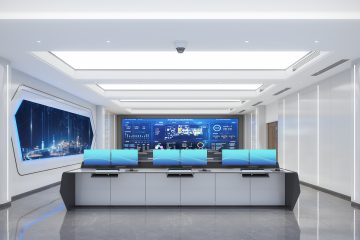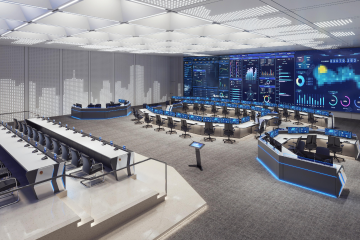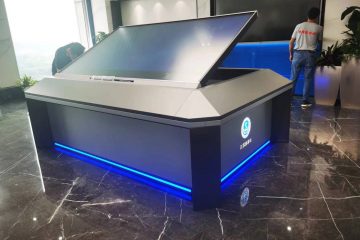Click me to visit our new website
As technology advances and work environments become more complex, the design and layout of control rooms are crucial to operational efficiency and personnel productivity. A well-designed and optimized console can not only improve operator comfort and concentration but also enhance overall work efficiency and responsiveness. This article will explore the key steps in a control room upgrade plan, particularly how optimizing console design can improve work efficiency.
1. Assessing Current Control Room Deficiencies
Before drafting an upgrade plan, it’s essential to conduct a comprehensive assessment of the current control room’s deficiencies. This includes:
- Operator Feedback: Collect feedback from operators regarding the current console design to understand the difficulties and challenges they face in their daily work.
- Workflow Analysis: Observe and document operators’ workflows to identify redundant steps and potential improvement points.
- Equipment and Technology Evaluation: Assess the performance and suitability of existing equipment and technology to determine if updates or replacements are needed.
2. Designing an Optimized Console
With a clear understanding of the current control room’s shortcomings, the next step is to design a new console. The core goal of optimizing console design is to enhance operator efficiency and comfort. Specific measures include:
- Ergonomic Design: Ensure that the console’s height, angle, and layout conform to ergonomic principles, reducing operator physical fatigue. For example, use adjustable monitor stands and keyboard trays to ensure operators can work in a comfortable posture.
- Layout Optimization: Arrange equipment and monitors according to operators’ workflows and habits to minimize movement and operation time. Key equipment should be placed within the operator’s line of sight for quick access.
- Cable Management: Optimize cable management to avoid clutter and safety hazards, thereby improving equipment maintenance and troubleshooting efficiency.
- Environmental Control: Provide good lighting, temperature, and ventilation conditions to create a comfortable working environment. Consider using adjustable lighting systems to meet different work needs and time periods.
3. Introducing Advanced Technology
Modern control room upgrades are inseparable from advanced technology. By incorporating the latest technology, the functionality and efficiency of the console can be further enhanced:
- Intelligent Control Systems: Implement intelligent control systems to achieve automated monitoring and data analysis, reducing the manual operation burden on operators.
- Big Data and Artificial Intelligence: Utilize big data and AI technology to analyze and process large volumes of data in real time, providing accurate decision support and early warnings.
- Integrated Communication Systems: Integrate various communication tools and platforms to enhance collaboration efficiency and information sharing among team members.
4. Training and Support
Operators need to adapt to and learn how to use the upgraded control room and console. Therefore, providing comprehensive training and support is crucial:
- Operational Training: Offer detailed operational training to ensure operators can proficiently use the new equipment and technology.
- Ongoing Support: Establish a continuous technical support and maintenance system to promptly resolve any issues operators encounter during use.
Conclusion
By optimizing console design, a control room upgrade plan can significantly enhance operator efficiency and comfort, as well as improve overall operational effectiveness and responsiveness. Through ergonomic design, layout optimization, the introduction of advanced technology, and comprehensive training and support, a modernized control room will become a core hub of efficient operation, helping enterprises remain competitive in an increasingly challenging market.



0 Comments